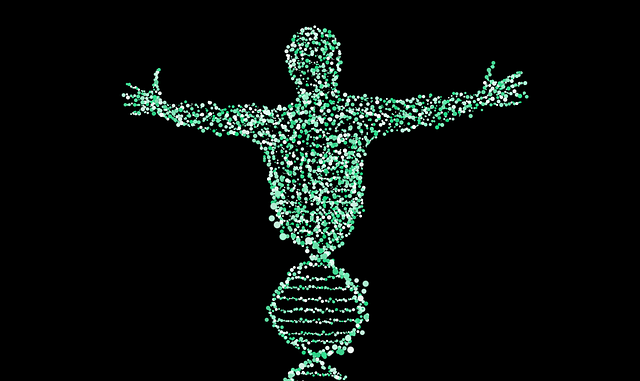
Synthetic biology is perhaps the newest of biology disciplines which has come on the heels of bioinformatics. It is a mixture of biochemical engineering, genetic engineering and computing all linked to the biology of a call. The idea is to examine for the moment, micro-organisms. These are treated as machines which can be broken down into constituent parts and then altered, rearranged and rebuilt to investigate new properties, new functions and new processes.
The potential is for us is unimaginable. It certainly is when you consider that it would represent a significant advance in our knowledge of cellular processes. Manipulating genes in a cell could mean that cells are programmed to become factories to make extremely high value products from new fuels to new medicines and frankly anything else in between.
The basic premise of molecular biology is that DNA can be replicated, can be transcribed to produce RNA which is then translated into proteins. All proteins perform a critical function in the cell. Altering this process has gradually developed over a number of decades since the discovery of DNA in the 1960s. From the 70s onwards, there has been an interest in genetic engineering for all sorts of reasons to improve our understanding. Enormous advances have occurred in medical and agricultural research. In many cases genetic engineering has generated new types of proteins which have novel functions and properties.
Recombinant DNA In Synthetic Biology
At the heart of genetic engineering is Recombinant DNA technology. This is the technique of inserting new genes into an organism. A number of methods are available but they revolve around the use of restriction enzymes, microinjection of genetic materials, the use of gene guns and CRISPR (Cas9) technology.
The process of producing recombinant DNA involves quite simply cutting and pasting DNA back together. This needs restriction enzymes which act as scissors by cutting specific sequences of nucleotides known as restriction sites. These DNA pieces have sticky ends which can then overlap with different pieces of DNA from other organisms. To stick these pieces together requires another enzyme called ligase. Either the same two strands come together or other strands with the same restriction site.
Plasmids
One of the simplest pieces of DNA for genetic engineering is the production of a recombinant plasmid. The plasmid is a very simply piece of DNA (or RNA) which is circular. It is not a chromosome and is found in bacteria. It has the advantage for genetic engineers of being replicated independently of bacterial chromosomes. That means it is a vehicle for introducing new genes into bacteria.
Application Of Synthetic Biology
We often discuss diabetes as a condition where people cannot regulate their blood glucose levels properly. Many people rely on the injection of a hormone called insulin which helps cells manage the metabolism of glucose in cells. Nowadays, bacteria can be used to produce human insulin.
Once the human insulin gene was identified, it was excised from the genome using restriction enzymes. This gene was then inserted into a plasmid. That was allowed to multiply in bacterial cells which did not affect their replication. The cells reproduce in vast fermentation vessels to produce insulin. The insulin is extracted from either the cell or the fermentation medium and purified. The bacterially produced insulin is now used by people.
We are aware of applications with the use of cell-free systems that could be considered an application of synthetic biology. Some industries believe it is possible to use such technology in carbon capture and to convert carbon dioxide for example into industrially useful products.
The Benefits Of Genetically Modified Organisms
Genetically modified organisms (GMOs) are generally shunned in the food production world but there are now many benefits associated with them. For example the agricultural world has seen many improved performances in plants:-
- Improved resistance to viral and bacterial diseases
- Improved resistance to insect damage meaning less pesticides are needed
- Improved resistance to herbicides so that weeds growing around crops are killed.
- Better nutrient levels as seen with Golden Rice, improved phytosterols in in soya crops etc.
- Increased yields
There are common misconceptions regarding genetically modified organisms including the fact that they are part of a conspiracy to poison people, are produced only by the industrial-military establishment and can produce disease especially cancer. At the moment, there is considerable activity to explain the valuable role synthetic biology can perform in enhancing our lives. It is a topic we will return to over the years because there are numerous developments occurring which we are attempting to understand.
![DNA. Nucleic acid purification. Okazaki fragments. PCR (digital PCR [dPCR], multiplex digital PCR, qPCR), DNA Repair, DNA Replication in Eukaryotes, DNA replication in prokaryotes, DNA barcoding](https://foodwrite.co.uk/wp-content/uploads/2016/11/dna-geralt-pixaby-03539309_640-150x150.jpg)
Leave a Reply